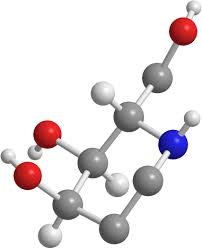Method of production of graphene nano-ribbons in carbon nanotubes based on nano-microelectronics (PhD)
Researcher and author: Engineer Afshin Rashid
Note: Graphene nano-ribbons are thin strips that have unique properties. It is also used in the production of CCVD carbon nanotube transistors
To produce this nanostructure, they have utilized the interior space of carbon nanotubes as a chemical reactor. By using organic molecules, elongated Cruins and Prillins have succeeded in synthesizing graphene nano-ribbons by placing them in a chamber of carbon nanotubes to provide a suitable space for their alignment and their ability to interact with each other. During these reactions, dimer molecules, trimers, or longer molecules are created in the form of powders. Dimer means double and trimmer means triple. The dimer molecules consist of two identical fragments and the trimer molecules are composed of three identical fragments . Each unit is a monomer, or in other words, a part of itself. The process of bonding similar parts and making larger molecules in each case is called dimerization and trimization.
Amorphous means bereft or bishop. In an amorphous solid as opposed to a crystalline solid, the arrangement of atoms and molecules does not follow the long-range order.
This method for producing tubular nano-transistors is very similar to one of graphene oxide production methods. During this rotation, the graphite is poured into a solution and dispersed by a centrifuge which rotates at a speed of several thousand rpm, during which the graphene plates are separated and precipitated. Other methods of graphene production include the formation of graphene layers using amorphous carbon, the production of graphene by electrochemical synthesis as well as the production of graphene from other graphite derivatives.
Epitaxial growth method in the production of tubular nano-transistors
In this method, graphene is produced by evaporating a non-carbon element from a carbon compound. For example, by increasing the temperature of the silicon carbide (SiC) substrate to 0111 ° C in the vacuum medium, the silicon begins to adsorb from the surface, resulting in areas of higher carbon content. Graphene islands are starting to grow in areas with higher carbon concentrations. Factors such as the thickness of graphene nano-layers, the amount of graphene nano-layers, the dimensions of the graphene layers, and the quality of production are influenced by the growth process of tubular nano-transistors.
Conclusion :
Graphene is widely used in the field of nanoelectronics due to its unique physical properties. Among these properties, the mobility of charged particles inside the graphene, or the mobility represented by the letter μ, is very important. The mobility value for graphene is 100,000 sV / cm2 . Also, its saturation velocity is reported to be about 107 5 5 s / m. Taken together, these properties make graphene a potent conductor for nanoelectronic applications, including applications in nano-tube transistors.





